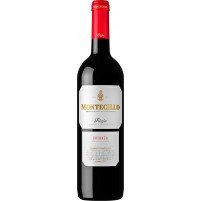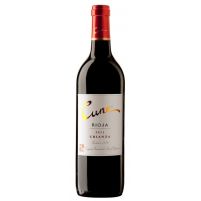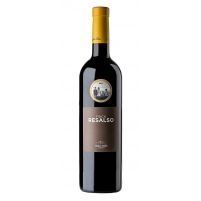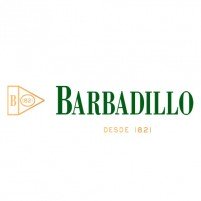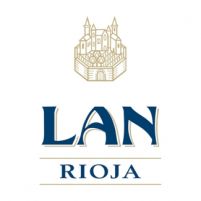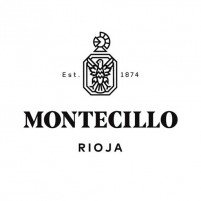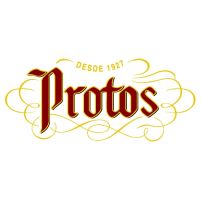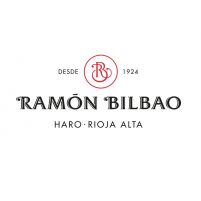0 products product (empty)
Red Wine > Alcohol Volume 13.5%
- SALE
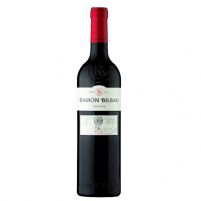
Ramón Bilbao Crianza 75cl
Red Wine(5)10,90 € 7,90 €6,53 € + VAT (21%)Price size: 75clAlso in: 37.5cl 4,90€ | 1.5L 11,95€Alcohol Volume: 13.5%Grape variety: TempranilloCountry: SpainAppellation of Origin: RiojaProvince: La RiojaTaste Ramón Bilbao Crianza, your Premium Rioja Red Wine.
- SALE

Ramón Bilbao Crianza 1.5L
Red Wine(5)18,30 € 11,95 €9,88 € + VAT (21%)Price size: 1.5LAlso in: 75cl 7,90€ | 37.5cl 4,90€Alcohol Volume: 13.5%Grape variety: TempranilloCountry: SpainAppellation of Origin: RiojaProvince: La RiojaTaste Ramón Bilbao Crianza, your Premium Rioja Red Wine.
- SALE
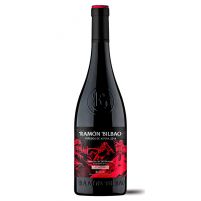
Ramón Bilbao Viñedos de Altura 75cl
Red Wine(1)14,00 € 11,89 €9,83 € + VAT (21%)Price size: 75clAlcohol Volume: 13.5%Grape variety: Tempranillo, GarnachaCountry: SpainAppellation of Origin: RiojaProvince: La RiojaTaste Ramón Bilbao Viñedos de Altura, your Premium Rioja Red Wine .
- SALE
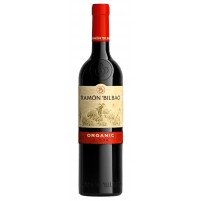
Ramón Bilbao Red Wine Organic 75cl
Red Wine11,00 € 8,91 €7,36 € + VAT (21%)Price size: 75clAlcohol Volume: 13.5%Grape variety: Tempranillo, GarnachaCountry: SpainVariety: EcologicalAppellation of Origin: RiojaProvince: La RiojaIf you like good wine and you are an environmentally conscious person, you are in luck. When you have a glass of Ramón Bilbao Red Wine Organic, you realise that it is a crianza wine that offers all the virtues you expect from a Ramón Bilbao, but with the knowledge that you are taking care of the planet.
- SALE
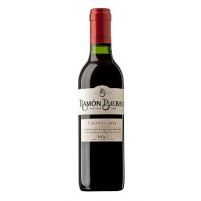
Ramón Bilbao Crianza 37.5cl
Red Wine(5)5,95 € 4,90 €4,05 € + VAT (21%)Price size: 37.5clAlso in: 75cl 7,90€ | 1.5L 11,95€Alcohol Volume: 13.5%Grape variety: TempranilloCountry: SpainAppellation of Origin: RiojaProvince: La RiojaTaste Ramón Bilbao Crianza, your Premium Rioja Red Wine.
Red Wine, the classic
Why do we call it "Red" wine and not "Red"? The name "Tinto" comes from the time when claret wine was in fashion (back in the 17th century) and it was made by mixing white wine with a little red wine (this was used in small quantities because it was more expensive to make), so from "tinted" wine it became "tinto" (red). With the passing of time, the methods used for the vinification of Red Wine were improved and it was no longer necessary to dye it, but it continued to be called Red Wine, due to its capacity to "dye".
As we know, Red Wine is an alcoholic beverage obtained from the must of red grapes that is fermented with the grape skins and is what gives it its characteristic ruby-red to purple colour. It is usually used to accompany all types of food, especially red meat, but it can also be drunk on its own. It differs from rosé and white wines in that it has a higher alcohol content.
History of Red Wine
The origin of red wine dates back to ancient Mesopotamia, where a group of archaeologists found evidence of the possible first wine harvest in Sumer, in the fertile lands irrigated by the Tigris and Euphrates rivers, and from Sumer it reached Egypt, where they fermented the grape must in earthenware jars and produced red wine. Over time, wine became a symbol of social status and was used as an essential element in religious rites and pagan festivals.
Due to the ease of adaptation of the vine, it managed to spread throughout Western Europe, reaching as far as China, but it was undoubtedly the Romans who became known for their great technological knowledge in cultivating the vine and making wine, as well as experimenting with grafting vines to obtain different varieties of grapes and with them to make different wines, among which red wine always stood out.
Winemaking Process
Winemaking is the process that grapes go through to become wine. As mentioned above, this process has been used since our ancestors, but over the years, it has reached a level of complexity and quality standards that are truly outstanding.
Harvest
It takes place between the months of September and October throughout Spain. In order to begin the process of harvesting the grapes, they must be in an ideal state of ripeness, as this is the only way to extract a quality wine from them.
Destemming
With destemming machines, the grape berries are separated from the bunch and all the branches and/or leaves are removed because they contribute bitter flavours and aromas during the maceration process. In the past, this process was done by hand.
Crushing
A crushing machine will manage to break the skin of the grapes, but the grapes must be crushed without breaking the seeds of the grapes, because they contribute bitterness to the must.
Maceration and fermentation
The juice extracted from the grapes must be kept at a controlled temperature for a few days to allow fermentation to take place and for it to acquire the desired colour. The length of this phase of the process will depend on the type of wine to be produced. Generally, it lasts between 10 and 14 days and must remain at temperatures no higher than 29ºC. The liquid is then transferred to another tank.
Pressing
After devatting (when the liquid is transferred to another tank after the fermentation time), the liquid that still contains the solid parts of the grapes is extracted and sent to a pressing process. The solid remains derived from the pressing are used for the production of pomace and other products.
Malolactic fermentation
Wine undergoes two fermentation processes, the first and best known being alcoholic fermentation and the second, malolactic fermentation. Through this process, the acidity of the wine is reduced and the flavours are refined.
Ageing
The process of ageing or crianza is a very important part of wine making, but not all wines go through this stage. The wine is placed in oak barrels to acquire aromatic notes, evolve and develop different characteristics. Depending on the size of the pore and the toasting of a barrel, it will provide certain flavours and allow a certain level of oxygenation; therefore, the choice of barrel will depend on the wine we are looking to produce. This process can take between 3 to 5 years.
Racking
In order to aerate the wine and eliminate solid sediments, it is important to aerate it by moving it from one barrel to another.
Clarification
It is very important to clarify the wine before bottling. For this reason, organic substances are used to drag the impurities suspended in the wine to the bottom of the barrels, cleaning it and preventing it from becoming cloudy.
Bottling
The second part of the wine's ageing period is bottling. It is important because it will allow the wine to stabilise and the aromas and properties it has developed in the cask to find a point of balance and harmony.
Classification of Red Wine
According to the ageing time of the Red Wines, we can classify them in the following way:
Young
This is the term used to classify Red Wines that are not aged in oak barrels and are bottled directly after alcoholic fermentation.
These are wines that spend a minimum of 6 months in oak barrels and up to 2 years in the bottle. The time spent in barrels gives them flavours and aromas.
Crianza
These are wines that spend a minimum of 6 months in oak barrels and up to 2 years in the bottle. The time spent in barrels gives them flavours and aromas.
Reserva
This type of wine has undergone at least 3 years of ageing, both in cask and bottle, before being marketed. Unlike White Wines, which must be aged in barrels for at least 6 months, Red Wines must be aged for at least 1 year t
Gran Reserva
This type of ageing is only possible for wines from exceptional vintages, because they require high quality grapes for their production. Red wines must spend at least 2 years in cask and 3 years in bottle. In the case of whites and rosés, at least 6 months in cask and 3 and a half years in bottle.
Red Wine Varieties
The varieties of red wine depend on the type of grape used in its production. Currently, there are eight types of Red Wine that are the best known and dominate the market in the whole world.
Tempranillo
It is one of the most important grape varieties in Spain. It covers a quarter of the total vineyards in our country. The red wines made with Tempranillo have an intense red tone, a pleasant acidity with a subtle and fine presence in the mouth.
Garnacha
A very Spanish grape variety that is present all over the world. This variety is used to make red wines with a high alcohol content, they age quickly, have low acidity and marked fruity aromas.
Merlot
A variety of French origin but whose production has spread all over the world. It is mainly used to produce varietal red wines, to which it contributes some acidity and notes of red fruits, plums, roses and spices.
Pinot Noir
A grape variety that is difficult to grow and vinify due to its tight clusters that increase the possibility of rot and complicate the winemaking process. Some of the wines made from Pinot Noir are considered the most sophisticated and elegant in the world. They are light-coloured, medium-bodied and have little tannin.
Syrah
This grape variety produces red wines with a wide variety of flavours that will depend on the climate and the soil where the vine has grown, as well as the winemaking process. It is a variety that adapts very easily to different geographical areas.
Zinfandel
This grape variety is originally from Europe, but nowadays, it occupies an important share in the American wine production. Red wines made from this grape have a strong flavour. They go perfectly with meats prepared in various ways, as well as with pasta and other dishes prepared with tomato sauce.
Malbec
The largest cultivation of this grape is in Argentina, although its origin is in Bordeaux. Red wines made with this grape variety are smooth and with little aroma. It is ideal to accompany dishes prepared with beef, lamb and vegetables.
Cabernet Sauvignon
This grape variety is very resistant to all types of climates and soils and, for this reason, it has become the most widely planted grape around the world. Red wine made with Cabernet Sauvignon has a very dark colour, with a strong and rigid aroma.
Cocktails made with Red Wine
- Queen Charlotte
- Red Chill
- 4th of July
- Sangria





